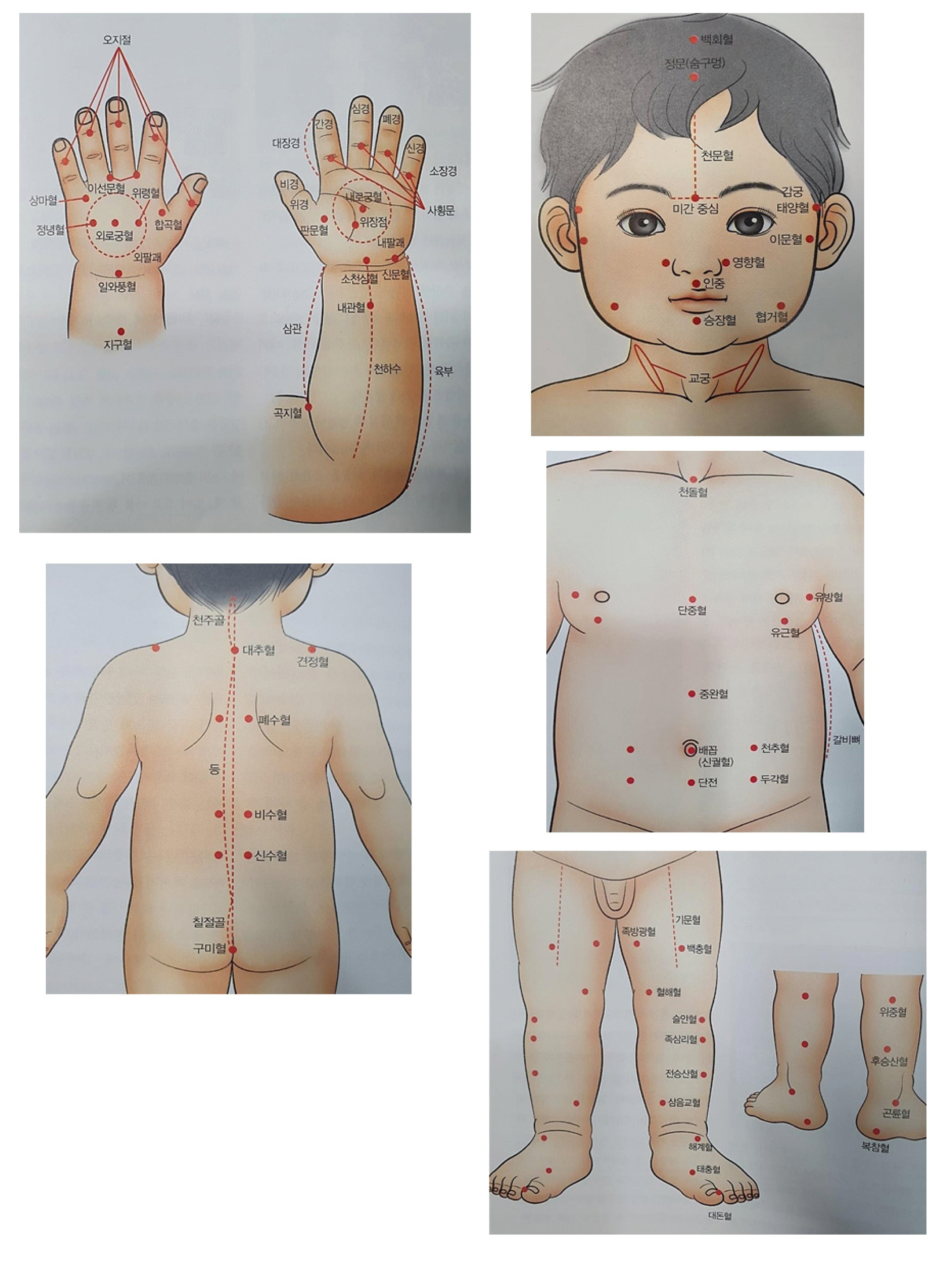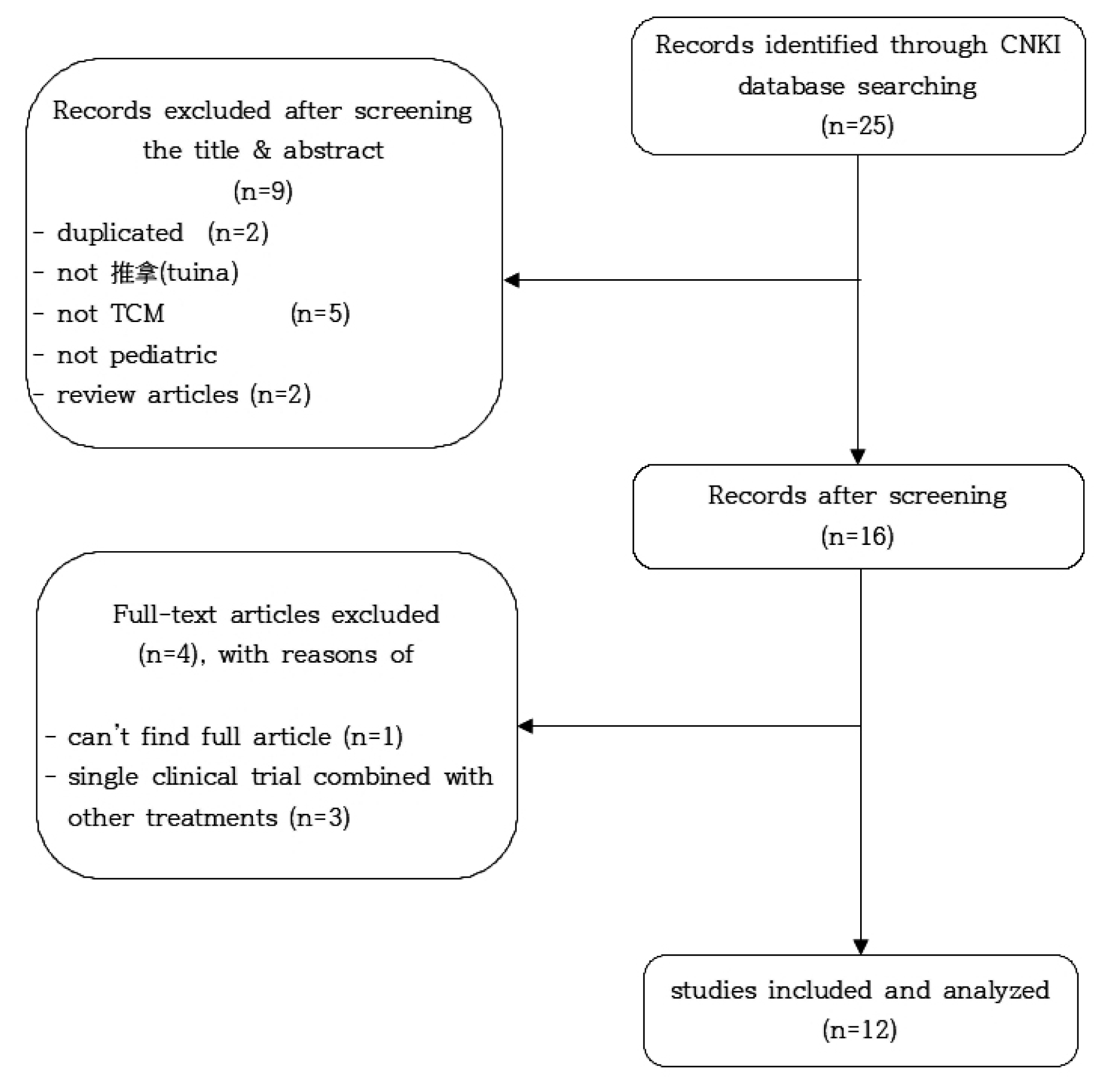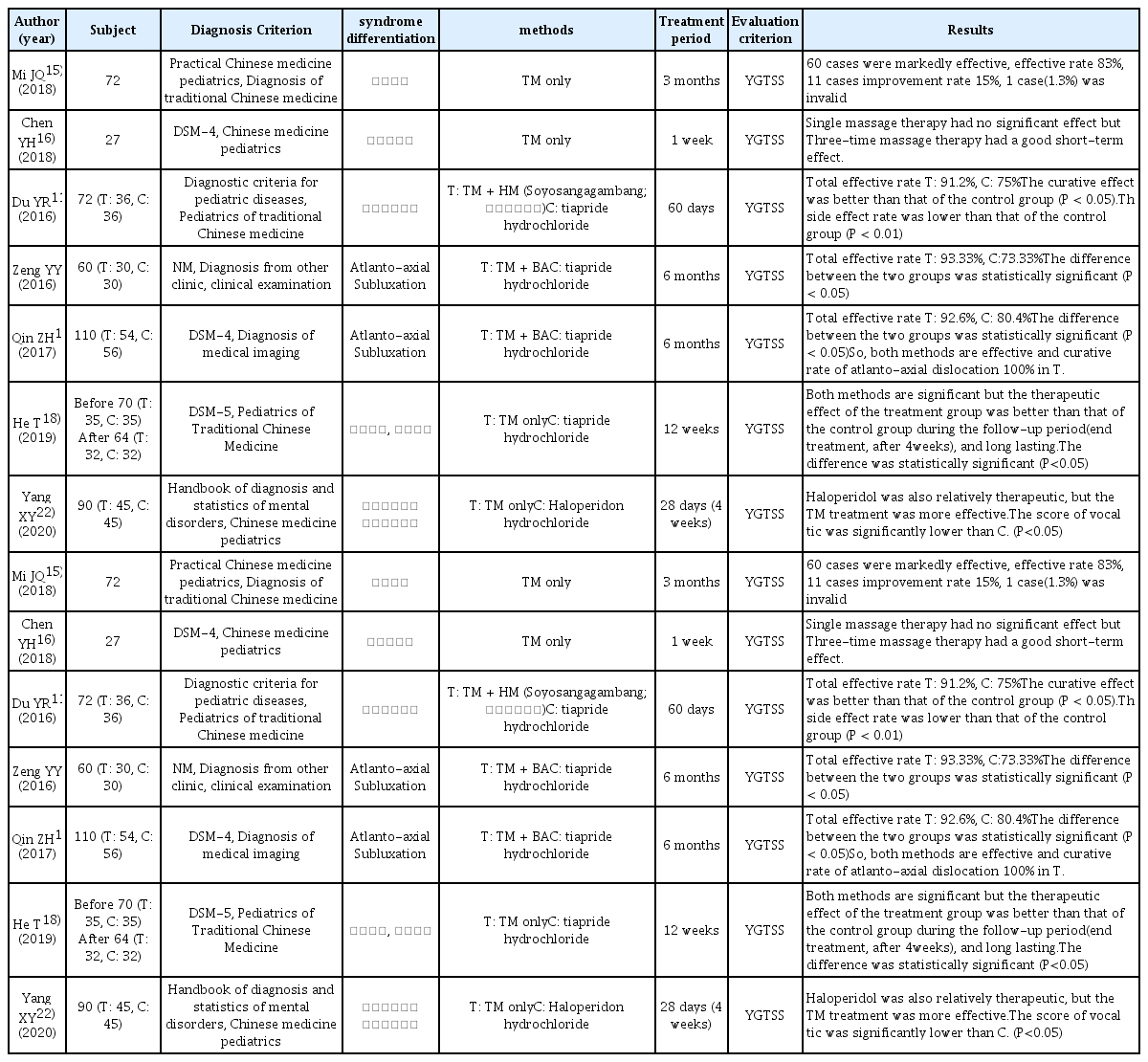References
1. Textbook (2020). of Korean pediatrics and adolescence medicine 3rd editionth ed. National Korean Medicine University of Pediatrics, published by Eusungdang. 517-523. 978-89-97223-35-0-93510.
2. Ahn HS, Shin HY. 2018. Hong Chang Hee Pediatrics 11th editionth ed. p. 46–47.
978-89-378-3014-3.
4. Lee YJ, Jeon JH, Kim ES, Kim YI. 2019. Review on case reports of syndrome differentiation and herbal medicine treatment for tic disorder. J Haehwa Med 28(1)13–25.
https://doi.org/10.7778/jpkm.2017.31.2.014
.
5. Shin JA, Kim LH, Jang IS, Kim JY. 2003;The treatment of tic disorder in traditional Chinese medicine. J Pediatr Korean Med 17(1):141–155.
1226-8038(pISSN), 2287-9463(eISSN).
6. Park WM, Kin CH. 2014. Clinical neuropsychopharmacology 2nd edth ed. Seoul: Sigma Press. p. 652–658.
9780470740767 (cloth).
7. Park SY, Park IH, Lee SH, Hwang MS, Hwang EH, Shin BC. 2019. Chuna manual therapy for pediatric allergic rhinitis; a systematic review and meta-analysis. J Korea Chuna Manual Med for Spine & Nerves 14(1)25–37.
https://doi.org/10.30581/jkcmm.2019.14.1.25
.
8. Textbook (2020). of Korean Pediatrics and Adolescence Medicine 3rd editionth ed. National Korean Medicine University of Pediatrics, published by Eusungdang. p. 988–994.
p. 517–523.
978-89-97223-35-0-93510.
9. Lee JJ. 2016;Case reports on 70 tic disorder cases managed with functional cerebrospinal therapy. J TMJ Balancing Med 6(1):19–23.
2234-5566(pISSN).
11. Du YU, Wang B. 2016;Clinical observation on Xiaoyao powder combined with massage in treating children with tourette syndrome. J Tradit Chin Med Natrop 24(5):60–61.
10.19621/j.cnki.11-3555/r.2016.05.053.
12. Zeng YY, Qin ZH, Song YY. 2016;Clinical analysis of adjusting atlanto-axial joint dislocation by external treatment for children with tic disorder. J of External Therapy of TCM 25(5):42–3.
1006-978X(2016)05-0042-02.
13. Mi JQ, Zhang XJ. 2017;Clinical observation of soothing liver and invigorating spleen in the treatment of children with transient tic disorder. J of Chin community Doctors 33(26):89–90.
10.3969/j.issn.1007-614x.2017.26.57.
14. Qin ZH, Huang RX, Hu YJ, Zeng YY, Song YY. 2017;Efficacy observation on acupuncture combined with massage in treating children with tic disorder complicated with atlanto-axial joint dislocation. J of Sichuan of TCM 35(12):206–209.
:1000–3649.
2017;12-0206-04.
15. Mi JQ, Pang R, Sun LP. 2018;Clinical study of massage therapy of Jian Pi An Shen Method in the treatment of transient tic disorder. J of Chin Community Doctors 34(36):102–104.
10.3969/j.issn.1007-614x.2018.36.063.
16. Chen YH. 2018. Observation on the efficacy of “Peitu Yimu Xifeng” massage therapy on children 's tic disorder. Dissertation for master's degree of Guangzhou university of Chin medicine UDC 6 1 0 Confidential Number 2 0 1 5 7 1 02 1 32.
17. Xu Y. 2019;Observation on treating the Tanre Dongfeng type of pediatric tic disorder with the Jiawei Huanglian Wendan decoction. clinical J Chin Med 11(35):58–62.
10.3969/j.issn.1674-7860.2019.35.022.
18. He T. 2019. Observationon clinical effect of Lio’s Tuina manipulations in treating children’s transient tic disorder. Dissertation for Master’s degree Chengdu University of Medicine;
19. Shen HY, Zhang ZH, Wang XF. 2020;Clinical observation on Anshen Ningzhi massage combined with traditional Chinese medicine for children’s tic disorder. J Chin pediatr integr Tadit west med 12(4):284–287.
10.3969/j.issn.1674-3865.2020.04.003.
20. Du CY. 2020. Clinical research of visceral acupoint massage treatment in treating children with tic disorders. Dissertation for Master's degree Tianjin University of TCM;
21. He JY, Zhou XA, Wu T. 2020;Treatment of 35 cases of infantile tic disorder of spleen deficiency and dampness stagnation type by calming wind, stopping spasm and regulating spine massage combined with heat-sensitive. J TCM Zhejiang 55(11):811. 10.13633/j.cnki.zjtcm.2020.11.018.
22. Yang XY, Shen CM. 2020;Observation on therapeutic effect of visceral massage in treating children's tic disorders. J Zhejiang JITCWM 30(12):1018–1020.
23. Ye XJ, Wang XY, Liu GH, Lin M, Huang ST, Zhao J, Wang TT. 2021;Family hardiness and its influencing factors of caregivers of children with tic disorder. Chin J Nurs Educ 18(3):279–283.
10.3761/j.issn.1672-9234.2021.03.018.
25. Song HJ, Gan HK, Kim YH. 2006;A case study on Tic disorder child treated by oriental medicine and play therapy. J Pediatr Korean Med 20(2):115–128.
1226-8038 (pISSN), 2287-9463(eISSN).
27. Jhou EJ, Jhou C, Zhi JH. 2016;Encyclopedia of SOS pediatric massage. :34–51.
979-11-87691-03-7-13510.





